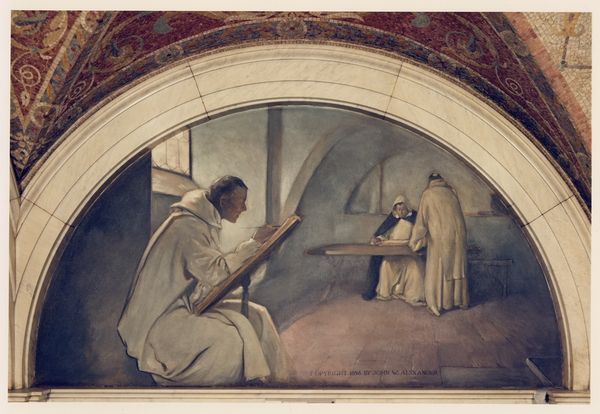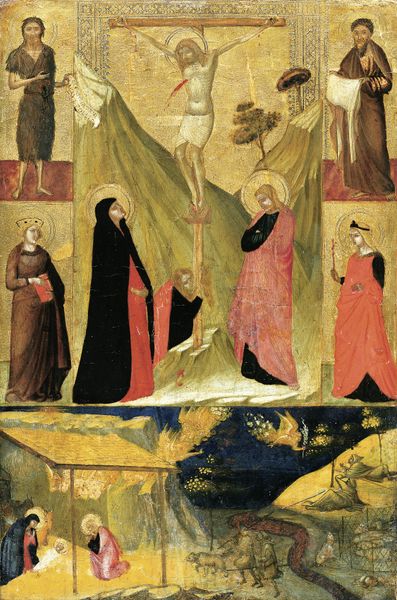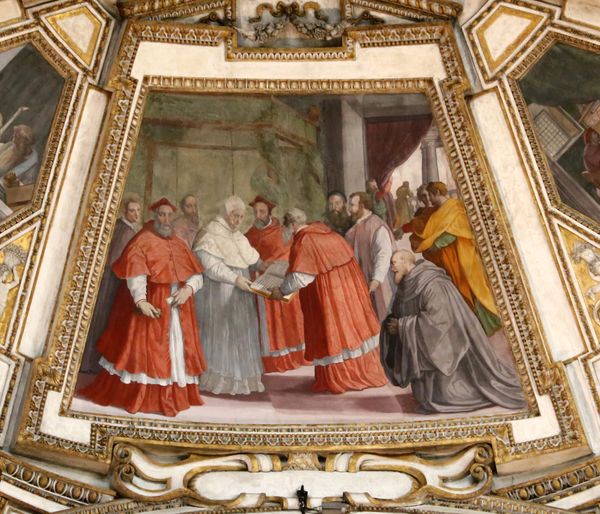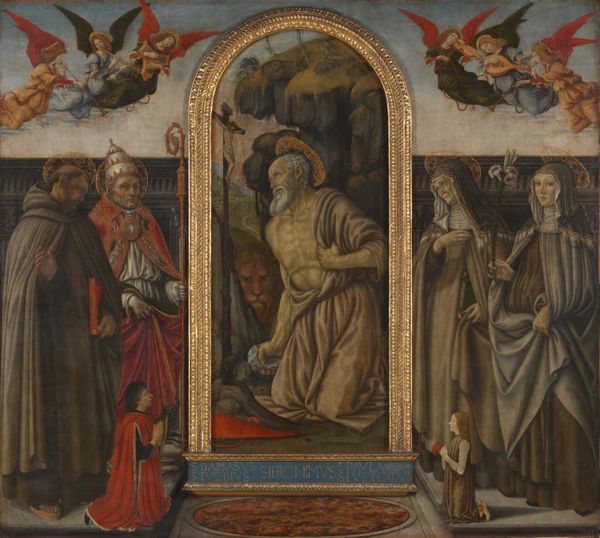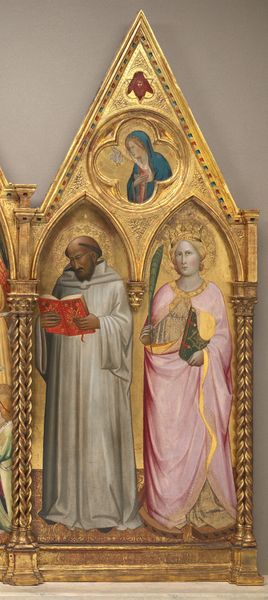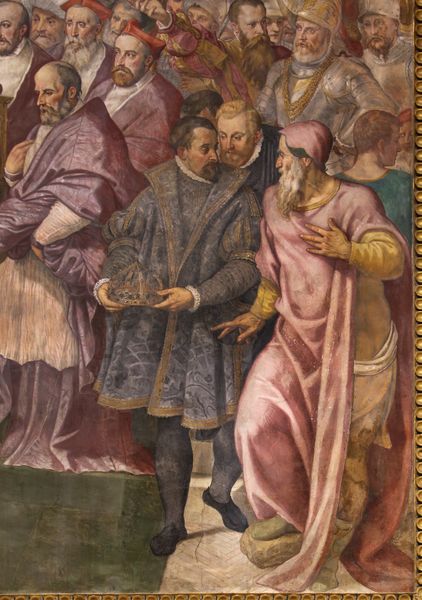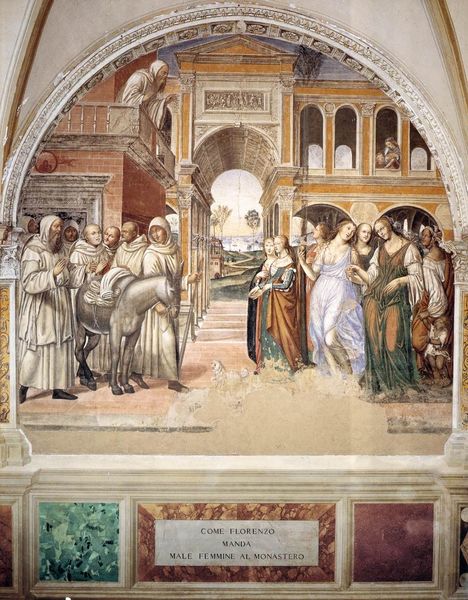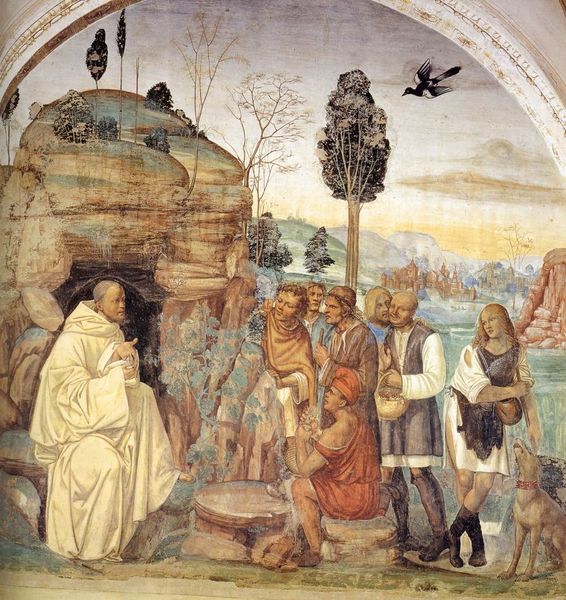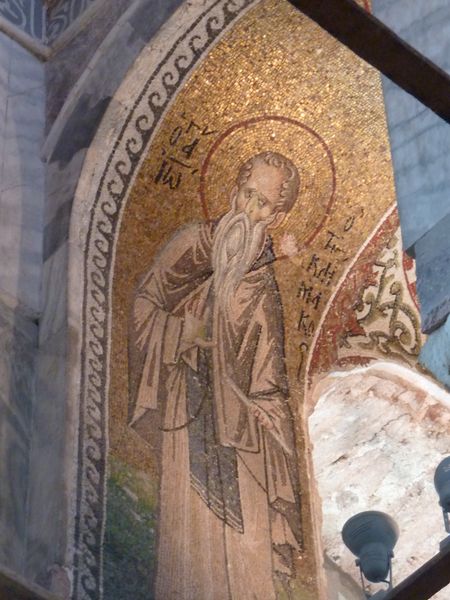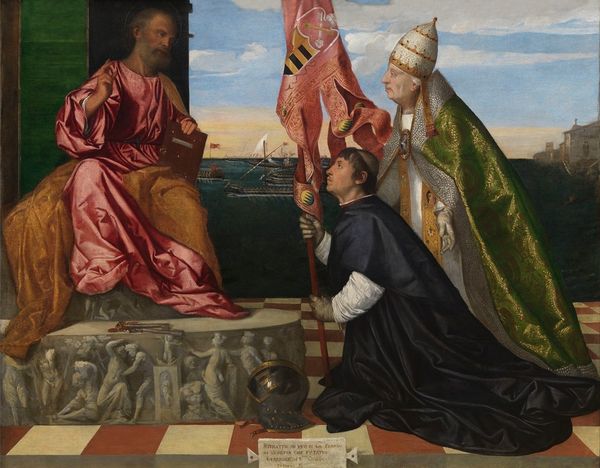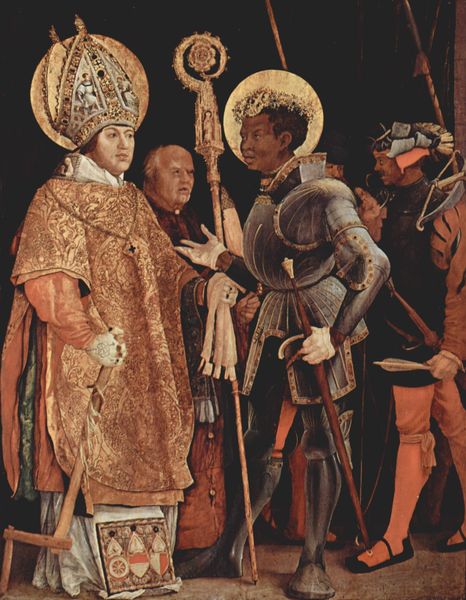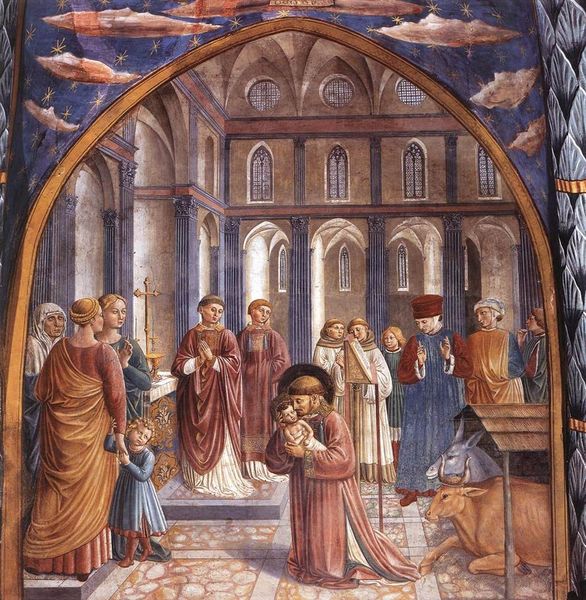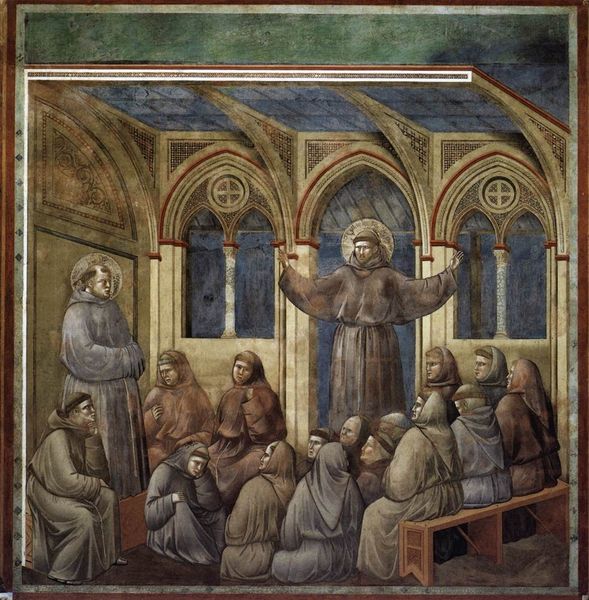
oil-paint
#
portrait
#
oil-paint
#
figuration
#
oil painting
#
history-painting
#
academic-art
#
italian-renaissance
#
early-renaissance
Copyright: Public domain
Curator: This is Gentile Bellini's oil painting, "Beato Lorenzo Giustiniani," created around 1465. Editor: The muted tones and hierarchical arrangement of figures certainly evoke a sense of somber reverence. The composition is quite striking in its formal construction. Curator: Bellini, situated within the Early Renaissance, portrays Giustiniani—a prominent Venetian patriarch later beatified—in a visual language laden with religious and civic significance. Giustiniani's legacy intertwined with Venice's sociopolitical fabric as a man committed to social justice. His ascension challenged existing ecclesiastical norms and promoted advocacy for the poor, which makes this portrait historically charged. Editor: Observe how the artist has skillfully employed the linear perspective, subtly drawing our eyes towards the central figure of Giustiniani. His figure stands out with more precise lines, suggesting that he is the subject. But isn't it peculiar how his vestment overwhelms his body with vertical, monochromatic stripes? The composition subtly suggests he is the main element of this scene but still gives off an air of asceticism. Curator: Indeed, Giustiniani's garb symbolizes piety and humility, challenging the opulent displays of the Venetian elite. But what the artist tries to explore is the tensions within the Venetian identity between wealth and religious devotion. This reflects the contemporary discussions about morality, wealth distribution, and political accountability. His placement— elevated and yet among monastic attendants—serves as a commentary on the complicated interplay between sacred duty and earthly power. Editor: Notice the subtle contrasts Bellini establishes: the crisp lines of Giustiniani’s robes against the more impressionistic rendering of the landscape, the somber palette punctuated by glimpses of earthy pigments and warmer hues in the distance. Even those details are strategically placed and give a rhythm and counterpoint to the vertical stripes that is mesmerizing. Curator: Exactly. I read this artwork as not only an aesthetic work but as a symbol representing historical debates about virtue, governance, and religious authority. This piece serves as a visual encapsulation of that complex socio-political landscape of Venice in the 15th century. Editor: Thank you, that contextual framing has changed the way that I see Bellini's oil painting now, deepening its significance. Curator: My pleasure, now I'm going to look at the use of oil-paint by Bellini a bit closer next time I see it here.
Comments
No comments
Be the first to comment and join the conversation on the ultimate creative platform.
